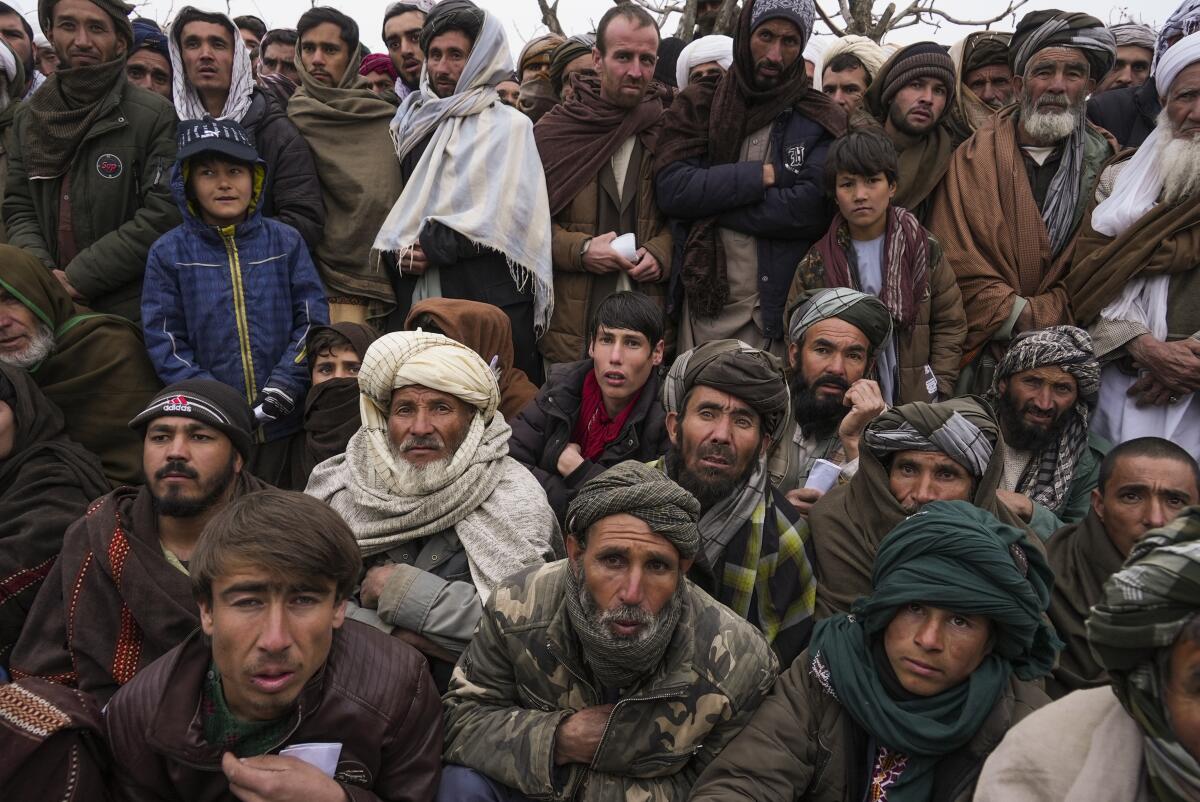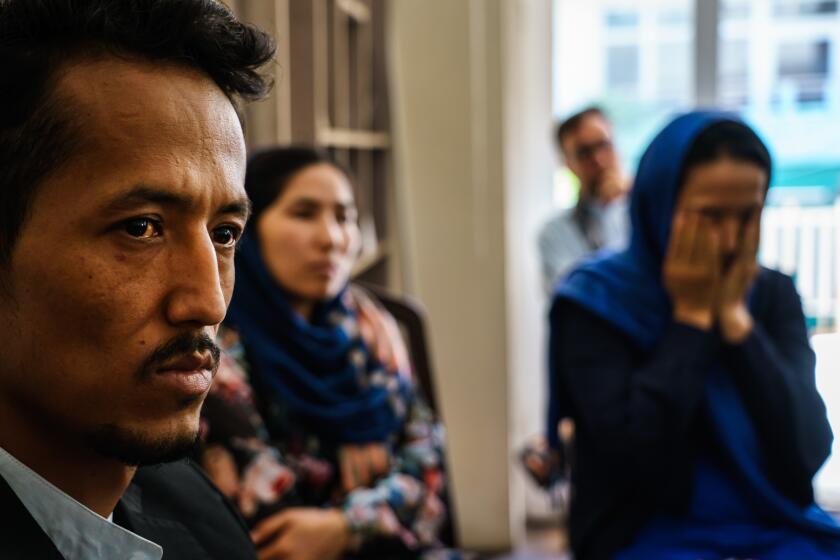U.S. announces $308 million in aid for Afghans as humanitarian crisis grows

- Share via
WASHINGTON — The White House has announced $308 million in additional humanitarian assistance for Afghanistan, offering new aid to the country as it edges toward a humanitarian crisis since the Taliban takeover nearly five months ago.
White House spokesperson Emily Horne said in a statement Tuesday that the new aid from the U.S. Agency for International Development would flow through independent humanitarian organizations and be used to provide shelter, healthcare, winterization assistance, emergency food aid, water, sanitation and hygiene services.
The country’s long-troubled economy has been in a tailspin since the Taliban takeover. Nearly 80% of Afghanistan’s previous government’s budget came from the international community. That money, now cut off, financed hospitals, schools, factories and government ministries.
Desperation for such basic necessities has been further exacerbated by the COVID-19 pandemic as well as healthcare shortages, drought and malnutrition.
USAID called on the Taliban to allow “all aid workers, especially women ... to operate independently and securely” as humanitarian groups look to assist those suffering.
“The United States continues to urge the Taliban to allow unhindered humanitarian access, safe conditions for humanitarians, independent provision of assistance to all vulnerable people, and freedom of movement for aid workers of all genders,” the agency said in a statement.
Iran, which is home to 3 million Afghans, with thousands more arriving daily, is sending more and more refugees back — into the hands of the Taliban.
The new aid brings U.S. humanitarian assistance for Afghanistan to more than $780 million since the chaotic ending of the 20-year-old war in August. The United Nations says 22% of Afghanistan’s 38 million people are living near famine and another 36% are facing acute food insecurity.
In addition, the White House pledged that it would send Afghanistan 1 million additional COVID-19 vaccine doses through COVAX, an initiative by the World Health Organization to improve access to vaccines. With the new influx of doses, the U.S. will have sent 4.3 million doses to Afghanistan, which has struggled to deal with the unrelenting pandemic.
International funding to Afghanistan was suspended, and billions of dollars of the country’s assets abroad, mostly in the United States, were frozen after the Taliban took control of the country in mid-August.
The decision by the U.S. and the international community not to recognize the Taliban government, which governed with a strict interpretation of Islamic law when it was in control from 1996 to 2001, has created a quandary for Western powers about how to provide enough aid without giving the Taliban legitimacy or putting money directly into its hands.
Aug. 31 marked the closing of the chapter on a 20-year U.S. intervention that ended the way it began: with the Taliban in control of Afghanistan. Here’s full coverage of the situation.
The lack of funding has led to increased poverty. State employees, including doctors, teachers and civil servants, haven’t been paid in months. Banks, meanwhile, have restricted how much money account holders can withdraw.
The Taliban has called on the international community to release funds and help stave off a humanitarian disaster.
More to Read
Sign up for Essential California
The most important California stories and recommendations in your inbox every morning.
You may occasionally receive promotional content from the Los Angeles Times.














